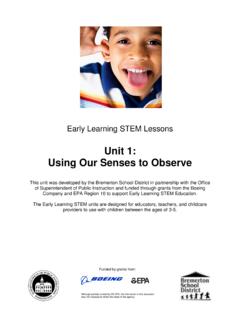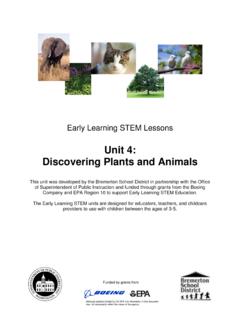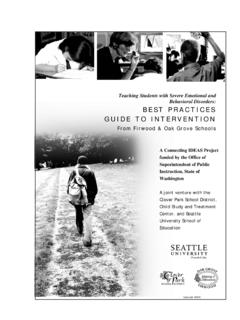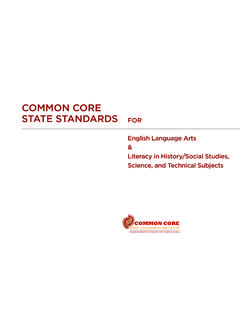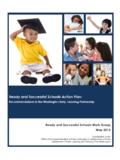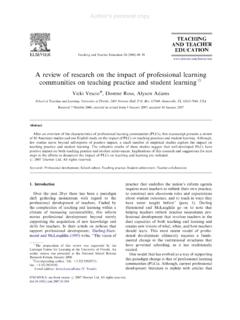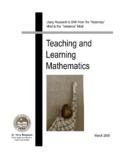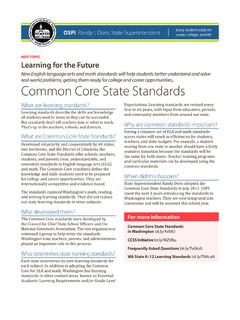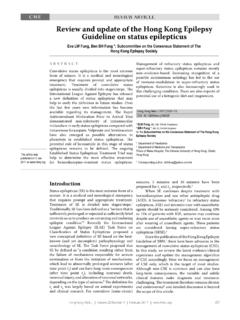Transcription of Physical Education Glossary - Office of Superintendent of ...
1 Physical Education Glossary Note: This Glossary provides definitions for some of the terms used in the Physical Education standards and grade-level outcomes. The terms and definitions included here are not meant to be a comprehensive list of essential concepts and ideas in Physical Education . Further information may be found in a variety of places, including the online sources listed at the end of this Glossary . Aerobic activity: Any sustained exercise that stimulates and strengthens the heart and lungs, thereby improving the body's use of oxygen.
2 Examples of aerobic exercise include jogging, rowing, swimming, or cycling Aerobic capacity: The maximum rate at which the body or an individual muscle can take up and use oxygen from the air; also known as maximal oxygen consumption (uptake) or VO2max. Agility: The ability to change body position quickly and to control one's Physical movements. Anaerobic activity: Any short-duration exercise that is powered primarily by metabolic pathways that do not use oxygen. Examples of anaerobic exercise include sprinting and weight lifting.
3 Artistic gymnastics: A discipline in which gymnasts perform short routines on different apparatus, which may include the balance beam, vault, bars, and floor. Balance: The ability to keep an upright posture while stationary or moving. Balance and control skills: The ability to control the movement of the body while stationary or moving. Base of support: An area defined by the parts of the body and any assistive devices, such as canes or crutches, that are in contact with the support surface. Biomechanical principles: Principles related to the study of Physical forces.
4 Anunderstanding of biomechanical principles can help one move efficiently and avoid injury. Body composition: All of the tissues that together make up the body: bone, muscle, skin, fat, and body organs. Body systems: Groups of organs that work together to accomplish a specific Physical or biological task. x Cardiovascular. The heart, blood vessels, and blood, which provide oxygen and nutrients to the body. x Digestive. The organs and glands that are responsible for ingestion, digestion, and absorption of food.
5 X Endocrine. The glands that produce hormones that regulate various body systems, including but not limited to metabolism, growth and development, tissue function, 93 of 118. reproduction, sleep, and mood. x Immune. The system that protects against infections and other foreign substances,cells, and tissues. x Muscular. The skeletal, smooth, and cardiac muscles that support movement and help maintain posture and circulate blood, among other functions. x Nervous. A complex communication system that transmits nerve impulses between parts of the body.
6 X Reproductive. The organs and glands in the body that aid in procreation. x Respiratory. The airways and passages that bring air, including oxygen, from outside the body into the lungs. x Skeletal. The framework of the body, consisting of bones and connective tissues that protect and support the body tissues and internal organs. Bones: Major bones of the body include the cranium, clavicle, sternum, vertebra, ribs, pelvis, humerus, ulna, radius, femur, tibia, fibula, patella, tarsals, metatarsals, carpals, metacarpals, and phalanges.
7 Borg rating: The measurement of intensity of Physical activity based on exertion. Cardiorespiratory endurance: The efficiency of the body's heart, lungs, and blood vessels to send fuel and oxygen to the body's tissues, most often during extended periods of moderate- to-vigorous activity. Competency: One's ability, skill, and knowledge to perform a task. Complex motor activities: Activities that involve more than one skill. Complex motor skills: Skills that are made up of two or more skills. Examples include hopping and skipping, throwing and catching.
8 Complex movement sequences: Movements that require a combination of motor skills. Components of health-related fitness: Aspects of Physical fitness that help one stayhealthy. Examples include: x Body composition: All of the tissues that together make up the body: bone, muscle, skin, fat, and body organs. x Cardiorespiratory endurance: The ability of the heart, lungs, and blood vessels to use and send fuel and oxygen to the body's tissues during long periods of moderate-to- vigorous activity. x Flexibility: The ability to move the joints through a full range of motion.
9 X Muscular endurance: The ability of the muscles to perform Physical tasks over a period of time without becoming fatigued. x Muscular strength: The amount of force a muscle can exert. 94 of 118. Components of skill-related fitness: Aspects of Physical fitness that help one perform well in sports and other activities that require certain Physical skills. Examples include: x Agility: The ability to change body position quickly and to control one's Physical movements. x Balance: The ability to keep an upright posture while stationary or moving.
10 X Coordination: The ability to use one's senses together with one's body parts, or to use two or more body parts together. x Power: The ability to use strength quickly. x Reaction time: The ability to react or respond quickly to what one hears, sees, or feels. x Speed: The ability to perform a movement or cover a distance in a short period of time. Concepts of direction: Forward, backward, left, right, clockwise, counter-clockwise, up, down, over, under, and through. Concepts of effort: Exertion of Physical or mental power in activities.
